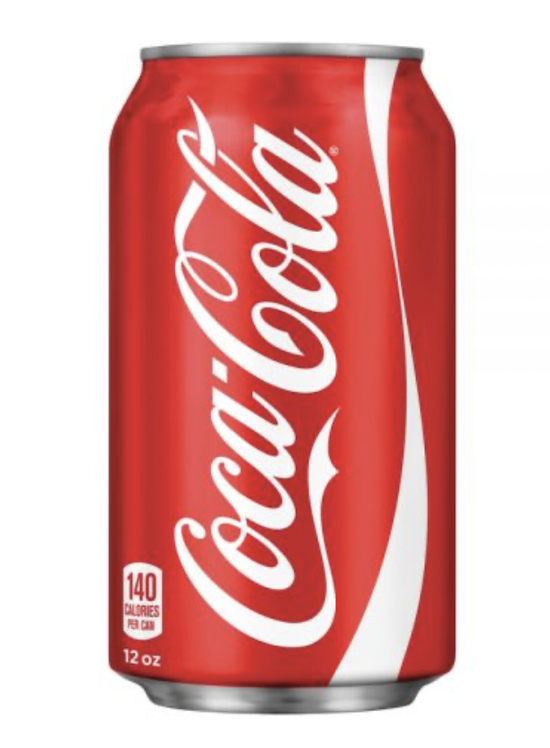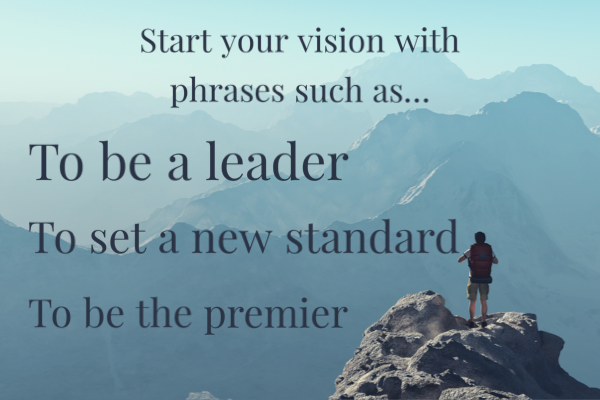Best Vision and Mission Statements and How to Write Yours
Vision and mission statements are guiding principles that declare where you see your brand in the future, how your brand will get there, and how your brand serves its clients/customers.They are an essential part of your brand identity. In fact, they are the very first thing you work on—along with brand values and goals—when you create your brand identity.
You can listen to my podcast called “How to Create a Brand Identity” and download the transcript for all the details.
“Do I need vision and mission statements even if I’m a freelancer?”
Yes.
How do you know where you’re going without a vision? How do you know what you’re doing without a mission?
Yes, you probably have a vision of what you want for your business. And you started your business because there’s something you want to do, a mission you have in mind. But did you put them in writing? Are they inspiring—like, really moving, “make other people want to join you” inspiring? Oh, and not cliché?
“I’m on a mission to change the world” is pretty cliché, I hate to say. And it’s not really inspiring. How are you going to change the world? In what way specifically?
In this post, I’m going to go more in depth on creating vision and mission statements and give 10 examples of some of the best ones out there. Use these examples to get inspired, to be ambitious, to be client-centric, and to keep it short!
It all starts with your values.
Vision and mission statements are first based on your brand values.
As a freelancer, you’re going to have brand values that are the same as or overlap with your personal values. Two of my top three personal values are the same as my brand values, and one is different. Authenticity and creativity are the same, and service is different.
Examples of values
To come up with your brand values, create a list of things that your brand cares about. Make the list as long as you want. Don’t edit or censor it… yet.
In addition to mine, think of values such as diversity, education, sustainability, leadership, humor, responsibility, dependability, stewardship. You get the idea.
Here are Apple’s values. They list them in the footer of their website: Accessibility, education, environment, inclusion and diversity, privacy, and supplier responsibility.
Once you have a long list, go back and narrow it down to three to five top values. Think about what values your brand really stands for. What values does your brand want to represent? What values would your brand fight for? Those are what you want to go with. Any more than three to five is unwieldy. Write them down where you won’t lose them. In fact, create a document called: Vision and Mission Statements. Values go at the top.
Now comes the vision statement.
Your vision is forward-thinking. It’s focused on the future. Your vision statement describes where you want your business to be in the future. It includes your purpose and your values.
Let’s take a look at some of the best vision and mission statements out there.
Amazon
Vision: “To be Earth’s most customer-centric company, where customers can find and discover anything they might want to buy online.”
Mission: “We aim to be Earth’s most customer-centric company. Our mission is to continually raise the bar of the customer experience by using the internet and technology to help consumers find, discover and buy anything, and empower businesses and content creators to maximize their success.”
Coca-Cola
Vision: “Our vision is to craft the brands and choice of drinks that people love, to refresh them in body & spirit. And done in ways that create a more sustainable business and better shared future that makes a difference in people’s lives, communities and our planet.”
Vision: “To provide access to the world's information in one click”
Mission: “Our mission is to organize the world’s information and make it universally accessible and useful.”
Harvard
Vision: “Harvard College sets the standard for residential liberal arts and sciences education. We have committed to creating and sustaining the conditions that enable all Harvard College students to experience an unparalleled educational journey that is intellectually, socially, and personally transformative.”
Mission: “The mission of Harvard College is to educate the citizens and citizen-leaders for our society. We do this through our commitment to the transformative power of a liberal arts and sciences education.”
Hulu
Vision: “Lead the future of Streaming TV by creating new and familiar experiences for our viewers, amplifying bold voices, and challenging our diverse builders and creators to push the boundaries of storytelling and technology.”
Mission: “To help people find and enjoy the world's premium video content when, where and how they want it.”
Nike
Mission: “Bring inspiration and innovation to every athlete* in the world. *If you have a body, you are an athlete.”
Sephora
Vision: “To be a leader in prestige omni-retail”
Mission: “To create a welcoming beauty shopping experience for all and inspire fearlessness in our community.”
Squarespace
Vision: “To provide a simple, stylish web publishing platform.”
Mission: “We exist to help people with creative ideas stand out and succeed. We create a modern platform that enables millions to build a brand, share their stories, and transact with their customers in an impactful and beautiful online presence.”
Starbucks
Vision: “To establish Starbucks as the premier purveyor of the finest coffee in the world while maintaining our uncompromising principles while we grow.”
Mission: “To inspire and nurture the human spirit – one person, one cup and one neighborhood at a time.”
United Airlines
Vision: “To become recognized as an airline where: leaders embrace diversity and inclusion as a business advantage, employees feel highly valued, are actively engaged and are treated with dignity and respect and customers value our inclusive approach to delivering flyer-friendly service.”
Mission: “To create an inclusive work environment, characterized by dignity and respect, that empowers every employee to serve the global marketplace and contribute to our success.”
What do you notice about these vision statements?
First, most of them are people-centric. Amazon comes right out and writes: "To be Earth’s most customer-centric company.” Coca-Cola writes, “…that people love.” Hulu write, “… for our viewers.” And United writes, “leaders,” “employees,” and “customers.”
While most of the vision statements have lofty visions, such as “to be the most”, “to set the standard,” “to lead the future,” “to be the leader,” and “to be the premier,” they still put people first.
How can you lead without having followers (i.e., people)? Whom are you setting the standard for? Whom are you being the premier for?
So, imagine where you want to be—being a leader, setting a new standard, blazing a trail—and including your people in there.
Where do your values come in?
You can see the values of some of these companies right in their vision statements. United values diversity and inclusion, dignity, respect, and service. Hulu values amplifying bold voices, diversity, creativity, pushing boundaries, storytelling, and technology.
The best vision statements include or imply the brand’s values.
Another part of a vision statement is the purpose of your brand. What are you in business for? And it’s not just to make money. What is your big Why? If you are in it to change lives, what does that look like? Notice that the only brand listed here that outright uses a changing-lives-type word is Harvard when they write “transformative.” The rest of the vision statements imply change with the vision being grand.
Google’s “To provide access to the world's information in one click” revolutionized online searches, and they don’t use the words “revolutionize,” “transform,” or “change.”
The other thing you notice about these vision statements is that they are all short—just one or two sentences. More than that just won’t be as inspiring. The shorter yours is, the easier it will be to remember. Your vision statement can be a sort of rallying cry. Yes, you may be a business of just one. But sometimes even you need a rallying cry when you’re feeling discouraged. And a powerful vision statement will be essential if you ever hire someone—even a contract worker.
Let’s get to writing your vision statement.
You’ve got your values. You’ve got your purpose. Now imagine where you want to be in the future. Do you see your brand as a leader? As setting a new standard? As being the premier ___?
Start writing whatever comes to you. Don’t edit or censor. It’s okay if it’s too long.
Now go back and edit. Edit some more. Make it shorter. Use more inspiring words.
Even more.
How long is it now? One or two sentences? Good.
Does it inspire you? Really? Would it inspire other people?
All right then! You’ve got it! Put it in your document—and don’t forget to hit “save”!
It’s time for your mission statement.
The difference between a vision statement and a mission statement is that a vision statement is oriented toward the future, while a mission statement is oriented toward the present. The mission statement discusses what your brand does and how it plans on getting to its vision of the future.
The mission statement, too, will be short—just one or two sentences.
Let’s look at Hulu for moment. I think they have excellent vision and mission statements. Their mission statement is, “To help people find and enjoy the world's premium video content when, where and how they want it.”
And here is their vision statement, “Lead the future of Streaming TV by creating new and familiar experiences for our viewers, amplifying bold voices, and challenging our diverse builders and creators to push the boundaries of storytelling and technology.”
Their mission statement refers directly to how they will lead the future of streaming TV—by helping “people find and enjoy the world’s premium video content when, where and how they want it.”
So, to create your mission statement, look at your vision statement and work backward. How will you get to your vision?
If you are going to set a new standard, how will you do that?
Refer back to Hulu’s vision and mission as examples. Think present tense. Your mission is what you do right now, and it can include how you do it.
Just like with your vision statement, start out writing as much as you want. Then chop it all down to one or two short sentences. And make it inspiring. Add it to your document and hit save.
Now, you can share your vision and mission—and brand values—on your website, if you want. Clients really appreciate that. At a minimum, refer to your statements when planning the future of your business and your brand. These are a key foundation of your brand identity. So, when you are strategizing for the future, definitely refer back to this document.














